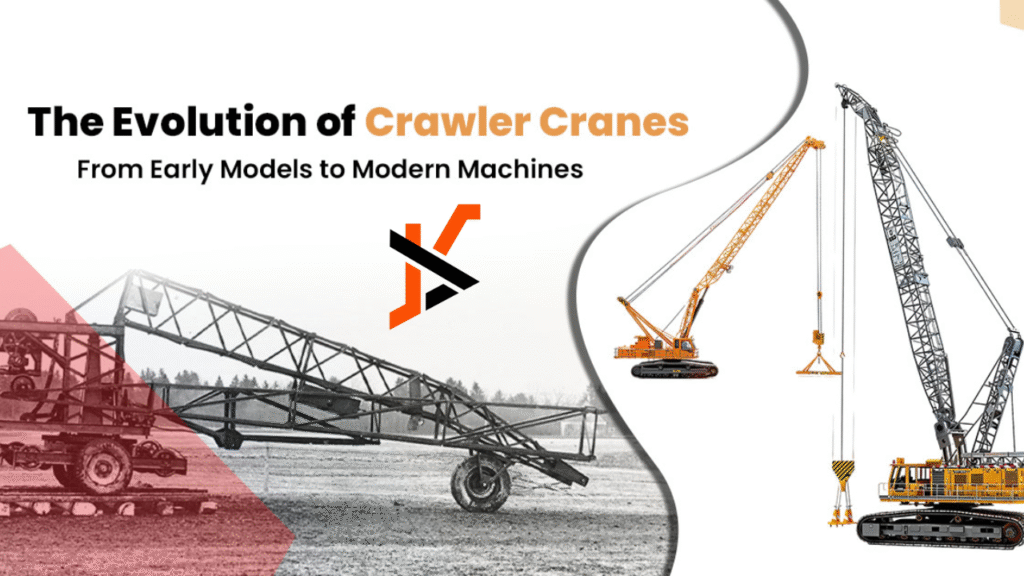The Ascendancy of Modern Lifting Equipment
The construction industry has not been immune to the forward march of technological progress. The inception of new equipment has meant more efficient building practices, safer work environments, and increased capabilities on site. Among the plethora of advancements, one type of equipment that has stood the test of time while continuously evolving is the crawler crane. These behemoths of the construction site have transformed substantially from their early predecessors, offering a blend of power and precision that was once deemed unfathomable.
Understanding Hydraulic Crawler Cranes
Before delving into the progression of these mechanical giants, it is crucial to understand what sets hydraulic crawler cranes apart from their relatives. Hydraulic crawler cranes boast a unique combination of hydraulic systems to manage their lifting tasks, aligned with a set of tracks (crawlers) that provide exceptional stability and mobility over various terrains. This hybrid of durability and intricate control has spearheaded their popularity on sites requiring extensive and versatile lifting capabilities.
Previous Generations and Their Limitations
The earliest cranes relied upon manual or steam-powered mechanisms, necessitating a significant workforce and posing safety risks through inconsistent operation. As time progressed, electric and internal combustion engines introduced a new era of power but still suffered with respect to mobility and flexibility on the rough ground.
Technological Infusions in Crane Evolution
Advancements in hydraulics marked a pivotal turning point for the crane industry. The shift towards hydraulic systems in the mid-20th century allowed for more refined control over the lifting process. Gradual improvements in materials science also augmented the strength-to-weight ratio of cranes, allowing for higher lifting capacities without a corresponding increase in size or weight.
The Modern Hydraulic Crawler Crane
In the modern age, hydraulic crawler cranes are at the zenith of their design. These cranes possess sophisticated computer systems that allow for precise load management, enabling them to manoeuvre heavy loads with minute precision. Safety features have also been significantly enhanced through innovations such as overload protection systems and advanced communication methods between cranes and operators.
Advantages Over Traditional Models
The introduction of crawlers to these hydraulic systems has resolved many of the mobility issues that plagued earlier models. The tracks distribute the crane’s weight more evenly, allowing for operation on less stable ground, which would stymie wheeled vehicles. Additionally, the lifting capacity of hydraulic crawler cranes typically surpasses that of traditional cranes, making them indispensable for large scale construction projects.
Increased Efficiency
Hydraulic crawler cranes also exhibit increased operational efficiency. Their ability to move and lift simultaneously reduces cycle times for lifting operations. Furthermore, many modern crawler cranes come equipped with features that aid in energy conservation, thereby reducing the environmental footprint of construction activities.
Enhanced Safety Measures
Emphasizing the importance of safety, the latest crane models include fail-safes such as automatic shut-off mechanisms and sensor arrays to prevent accidents. These developments have drastically lowered the incidence of workplace injuries associated with crane operations.
The Environmental Aspect
Manufacturers have also begun incorporating eco-friendly aspects into hydraulic crawler crane design. This includes the use of biodegradable hydraulic fluids and the development of electric-powered models which eliminate emissions and reduce noise pollution.
The Impact of Hydraulic Crawler Cranes on Construction
The transformation of cranes, particularly the shift towards modern hydraulic crawler cranes, has made a significant impact on the construction industry. Their ability to navigate through challenging terrains and to lift heavy loads with impeccable precision has opened the doors to projects that would have otherwise been considered too risky or impossible to undertake.
Future Prospects
Looking ahead, the potential for further advancements in crawler crane technology is immense. Anticipations include increased automation, remote operation capabilities, and further integration of renewable energy sources. These innovations will likely propel the construction industry into a new era of efficiency and capability.
Conclusion
The evolution of the crawler crane signifies more than a mere progression of machinery; it exemplifies the construction sector’s continuous quest for innovation, safety, and operational excellence. The crawler crane of today is the culmination of decades of engineering ingenuity and stands as a testament to the unyielding power of human innovation. As we venture into the future of construction equipment, the hydraulic crawler crane will undeniably remain a cornerstone, lifting the aspirations of architects and engineers alike to greater heights.
Navigating the Present and Future of Construction
In the ever-evolving landscape of construction, professionals and enthusiasts alike must stay informed about the latest trends and equipment shaping the industry. Hydraulic crawler cranes are one such example of how integrating newer technologies can significantly enhance productivity and safety standards. Now and in the future, these cranes will continue to shape the skylines of our cities and the infrastructure that supports our societies.

